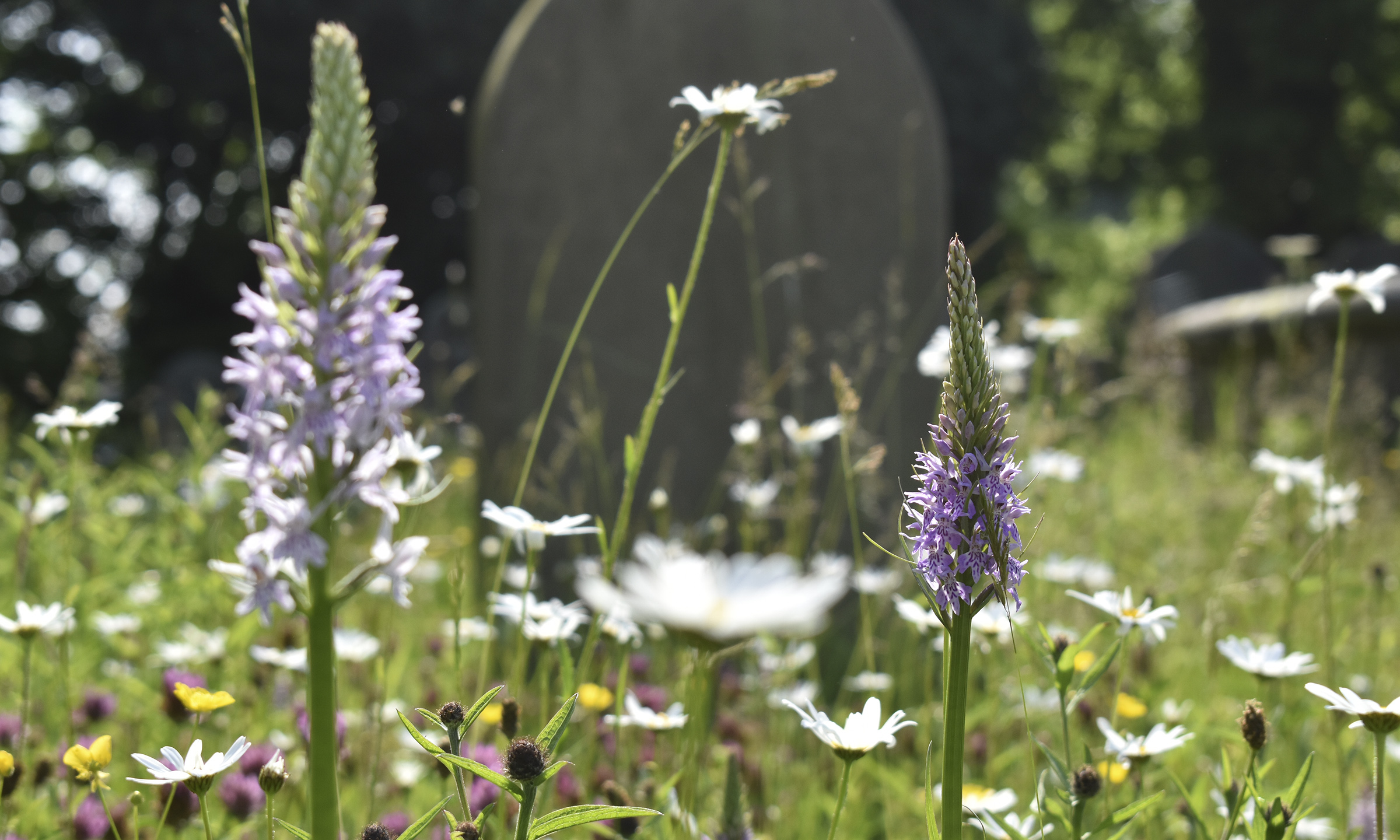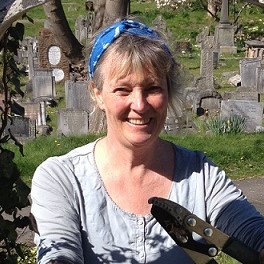Harriet Carty is director of Caring for God’s Acre, the conservation charity dedicated to all burial grounds. In this blog she explains why burial grounds are so important for biodiversity and how everybody can get involved in helping our threatened wildlife.
Burial grounds hold so much of interest and value that it’s hard to know where to start. They are the place within a community for burial and remembrance, but also our local history waiting to be explored and a true haven for wildlife. They are places of fascination for many and valued for the atmosphere of peace and tranquillity, where you can hear birdsong and slow down for a minute. Visit a churchyard or cemetery and you may see someone eating a lunchtime sandwich, having a breath of fresh air using a wheelchair, pushing a baby buggy or letting a toddler try out newly learned walking skills in a safe and traffic-free place.
What leads to this atmosphere of timelessness and the range of plants, animals and fungi to be found here? There are clues in the history of burial grounds and by managing with history in mind, you can keep a burial ground welcoming to people, teeming with wildlife and also improve access to our built heritage for people to explore and enjoy.
The Caring for God’s Acre Action Pack will help you plan this management. Start by imagining your churchyard or cemetery through the centuries… what did it look like and which features were there? The oldest thing may be an ancient yew, with the boundary wall a close second. Take great care of these ancient features and seek advice from Caring for God’s Acre in order to maintain this link with early Christian or even pre-Christian times. Have a look on the Ancient Yew Group website if you would like to find out more; these green giants are well worth a visit. Try to maintain walls through regular maintenance, but if they need restoration, then we can advise on how to get help with this.
For several centuries, churchyards contained few built structures, perhaps a churchyard cross but no grave markers. These became fashionable in the 18th Century with many dating from Georgian or Victorian times. Prior to this, the churchyard was a meadow, cut for hay and used for activities such as archery practice. Management would not have changed much with the advent of stone monuments. This was still a meadow after all, managed with scythes or by grazing; so our older monuments would have stood within longer grass full of wildflowers - a familiar sight to those living at that time. Why not see if you can manage these older areas for long, flowery grassland?
Our Action Pack gives advice on how to do this and simple cutting regimes to follow. Raking up and removing grass cuttings is the golden rule, regardless of grass length.
With the stone monuments came lichens, which have been slowly growing for as long as the stones have been standing. Burial grounds are now hotspots for these. Try to keep ivy from covering them, but if ivy is already there, it is probably best to leave it, as it protects monuments, keeping the wording legible and preventing erosion.
For newer areas with recent graves, and for the edges of paths and the entrance to a church or chapel, short grass that is regularly mown is recommended. Follow the golden rules though… pick up grass cuttings and remember that these have value for wildlife too.
With burial grounds covering an area approximately that of Exmoor, this is a significant area of land and Caring for God’s Acre want to get a picture of the species to be found across the country. Look for waxcap fungi in Autumn or song thrush and wagtails feeding on invertebrates. We would love to hear about any wildlife seen within a burial ground, whether it’s a magpie, molehill or squirrel, or a full botanical survey. Have a look at our Beautiful Burial Ground project to find out how you can add you records to a national system. We are running activities and training to help people to participate in this project so have a look to see if anything is happening near you and if not, get in touch and we’ll see what we can arrange.
To find out more, visit our website, get in touch via phone or email and attend one of two conferences coming up in soon; 12 March in The National Museum, Cardiff and 26 March in The Circle, Sheffield. Booking is essential.







